Side note. You can give me feedback about anything here (anonymously or not).
Summary
- I estimate animal farming:
- Decreases the living time of (wild) soil nematodes, mites, and springtails hugely more than it increases that of directly affected animals.
- Increases the welfare of soil nematodes, mites, and springtails hugely more than it changes that of directly affected animals.
- My best guess is that those soil animals have negative lives, so I think decreasing their animal-years by increasing land use is beneficial.
- I believe broadly advocating for decreasing the consumption of animal-based foods tends to be harmful. I predict it decreases cropland due to predominantly resulting in the replacement of poultry and pig meat, and beef with plant-based foods. In agreement with this, I estimated School Plates in 2023, and Veganuary in 2024 harmed soil nematodes, mites, and springtails 5.42 k and 3.58 k times as much as they benefited directly affected animals.
- I recommend donating to the High Impact Philanthropy Fund (HIPF) from the Centre for Exploratory Altruism Research (CEARCH). I estimated its cost-effectiveness is 20.3 times the past one of Shrimp Welfare Project’s (SWP’s) Humane Slaughter Initiative (HSI) due to decreasing the living time of soil nematodes, mites, and springtails by 2.84 billion animal-years per $.
- I consider it very worth it to decrease the uncertainty about how interventions affect the living time of soil nematodes, mites, and springtails, and about their welfare in QALY/animal-year.
- I have been eating fully plant-based for 6 years, and plan to continue. My whole-food plant-based diet is cheaper than a standard diet, so it allows me to donate more, and I think the increased impact from this is larger than the harm caused by eating more plant-based foods.
Impact of animal farming on the living time of animals
I estimate animal farming decreases the living time of soil nematodes, mites, and springtails animals hugely more than it increases that of directly affected animals. For example, I conclude 0.1 kg of chicken meat causes 2.87 animal-days more in directly affected animals, but 6.16 M animal-years less in soil nematodes, mites, and springtails for feed crops replacing temperate grasslands, savannas, and shrublands, which is 783 M times as many animal-years. For that land use change, among the 8 animal-based foods below, the decrease in the living time of soil nematodes, mites, and springtails ranges from 551 k (shrimp) to 436 billion (dairy milk) times the living time of directly affected animals.
I determined the decrease in animal-years in soil nematodes, mites, and springtails per food-kg multiplying the m2-years per food-kg from Poore and Nemecek (2018) by estimates for the decrease in those animals per m2 due to expanding feed crops, which I computed from my estimates for the number of soil nematodes, mites, and springtails per m2. I set the density of soil mites, and springtails by biome to the values from Table S4 of Rosenberg et al. (2023), and got the density of nematodes from the product between the sum of the densities of mites and springtails, and 51.5, which is my estimate for the number of soil nematodes as a fraction of the number of soil mites and springtails. I underestimated the decrease in animal-years in soil animals due to assuming none of the land use regards the expansion of pastures, which I estimate have 41.7 % (= 1 - 734*10^3/(1.26*10^6)) less soil animals per unit area than crops.
I set the increase in animal-years in directly affected animals per food-kg of animal-based foods to estimates from Faunalytics for the United States (US) for the living time of farmed and wild animals, including farmed animals which die before slaughter, and 1 animal-day per wild feeder fish.
Impact of animal farming on the welfare of animals
I estimate animal farming increases the welfare of soil nematodes, mites, and springtails hugely more than it changes that of directly affected animals. For example, I conclude 0.1 kg of chicken meat decreases the welfare of directly affected animals by 0.00593 QALYs, but increases that of soil nematodes, mites, and springtails by 28.5 QALYs for feed crops replacing temperate grasslands, savannas, and shrublands, which is 4.81 k times as many QALYs. For that land use change, among the 8 animal-based foods below, the increase in the welfare of soil nematodes, mites, and springtails ranges from 9.39 (shrimp) to 11.7 M (dairy milk) times the absolute value of the change in the welfare of directly affected animals.
| Food | Decrease in the welfare of directly affected animals (QALY/food-kg) |
| Shrimp | 7.38 |
| Fish | 0.0454 |
| Chicken | 0.0593 |
| Eggs | 0.0430 |
| Turkey | 0.0237 |
| Beef | -0.00145 |
| Pork | 0.00716 |
| Dairy milk | -1.78*10^-5 |
I determined the increase in the QALYs of soil nematodes, mites, and springtails per food-kg multiplying the aforementioned m2-years per food-kg by estimates for the increase in the QALYs of soil nematodes, mites, and springtails per m2 due to expanding feed crops, which I computed from my estimates for the QALYs of soil nematodes, mites, and springtails per m2. I got these multiplying the aforementioned densities of soil animals by a welfare of soil nematodes, mites, and springtails of -4.36*10^-6, -1.57*10^-5, and -2.35*10^-5 QALY/animal-year, which I calculated for welfare ranges equal to 0.324 %, 1.79 %, and 3.09 % of Rethink Priorities’ (RP’s) mainline welfare range of silkworms. I underestimated the increase in the welfare of soil animals due to assuming none of the land use regards the expansion of pastures, which I estimate have 41.1 % (= (-3.40 - (-5.77))/ABS(-5.77)) more welfare per unit area than crops.
I got the absolute value of the change in the QALYs of directly affected animals per food-kg multiplying the aforementioned increase in animal-years in directly affected animals per food-kg by the absolute value of estimates for the decrease in the QALYs of directly affected animals per animal-year, which I obtained from the product between this decrease as a fraction of the welfare range of the target animals, and RP’s mainline welfare ranges. I set the decrease in the QALYs of directly affected animals per animal-year as a fraction of the welfare range of the target animals to:
- For shrimp, 8.77, as I got for increasing the living time of shrimp on an ongrowing farm with air asphyxiation slaughter.
- For fish, chicken, turkey, and pork, 2.27, as I got for increasing the living time of broilers in a conventional scenario.
- For eggs, 1.69, as I got for increasing the living time of laying hens in a conventional cage.
- For beef, and dairy milk, -1/3, which is my guess. It is negative, thus representing an increase in the QALYs of directly affected animals, because I expect cows to have positive lives.
Increasing animal farming increases animal welfare?
I illustrated above why I think animal farming impacts soil nematodes, mites, and springtails hugely more than directly affected animals. My best guess is that those soil animals have negative lives, so I think decreasing their animal-years by increasing land use is beneficial. Below are the m2-years per food-kg from Poore and Nemecek (2018).
The above are mean values. They do not apply to every single case. Nevertheless, I infer the following replacements are generally beneficial due to increasing land use:
- Plant-based foods, farmed shrimp (prawns), eggs, or farmed fish with poultry or pig meat.
- Poultry or pig meat with cheese.
- Cheese with beef.
I believe broadly advocating for decreasing the consumption of animal-based foods tends to be harmful. I predict it decreases cropland due to predominantly resulting in the replacement of poultry and pig meat, and beef with plant-based foods. In agreement with this, I estimated School Plates in 2023, and Veganuary in 2024 harmed soil nematodes, mites, and springtails 5.42 k and 3.58 k times as much as they benefited directly affected animals.
I am glad farmed shrimp are the animal-based food from Poore and Nemecek (2018) requiring the least agricultural land per food-kg. This means replacing farmed shrimp with other animal-based foods tendentially increases cropland, thus having the added benefit of increasing the welfare of soil nematodes, mites, and springtails.
My recommendations
I recommend donating to HIPF from CEARCH. I estimated its cost-effectiveness is 20.3 times the past one of SWP’s HSI, 13.0 kQALY/$, due to increasing the living time of humans by 0.189 human-year per $, and therefore increasing cropland by 1.34 k m2-years per $, and decreasing the living time of soil nematodes, mites, and springtails by 2.84 billion animal-years per $, which is super good given my best guess they have negative lives.
It is unclear to me whether soil nematodes, mites, and springtails have positive or negative lives. I calculated they have negative lives with a probability of 58.7 %, 55.8 %, and 55.0 %. I do not think effects on them can be neglected just because they are uncertain. Nevertheless, I consider it very worth it to decrease the uncertainty about how interventions affect the living time of soil nematodes, mites, and springtails, and about their welfare in QALY/animal-year. In particular, it is crucial to know whether they have positive or negative lives.
Eating plant-based still makes sense to me
I have been eating fully plant-based for 6 years, and plan to continue. My whole-food plant-based diet is cheaper than a standard diet, so it allows me to donate more, and I think the increased impact from this is larger than the harm caused by eating more plant-based foods. I estimated buying beef, which I believe is the most cost-effective way of increasing animal welfare through diet, has a cost-effectiveness of 408 QALY/$, 3.14 % (= 408/(13.0*10^3)) of HIPF’s, for a cost of 6.32 $/meat-kg. Consequently, I infer buying food which is cheaper than this by more than 0.198 $/food-kg (= 0.0314*6.32), and donating the savings to HIPF increases animal welfare more. Legumes are generally cheaper than beef by much more than that.
I also expect a whole-food plant-based diet to increase my donations as a result of being healthier, and therefore decreasing my spending on health, and increasing my future earnings via extending my life. From Willett et al. (2019), the global adoption of a predominantly plant-based healthy diet, with just 13.6 % (= (153 + 15 + 15 + 62 + 19 + 40 + 36)/2500) of calories coming from animals (as implied by the values in Table 1), would decrease premature deaths of adults by 21.7 % (= (0.19 + 0.224 + 0.236)/3; mean of the estimates in Table 3).
I see the above as arguments for focussing on increasing donations, not for following a vegan lifestyle, or eating fully plant-based. I do not specifically look for vegan supplements, or non-food products. They are often more expensive, and I do not expect them to be better. In contrast, I expect whole plant-based foods to be healthier than animal-based foods.
Acknowledgements
Thanks to Aro Roseman for clarifications about Faunalytics’ estimates, and to Michael St. Jules for feedback on the draft. The views expressed in the post are my own.


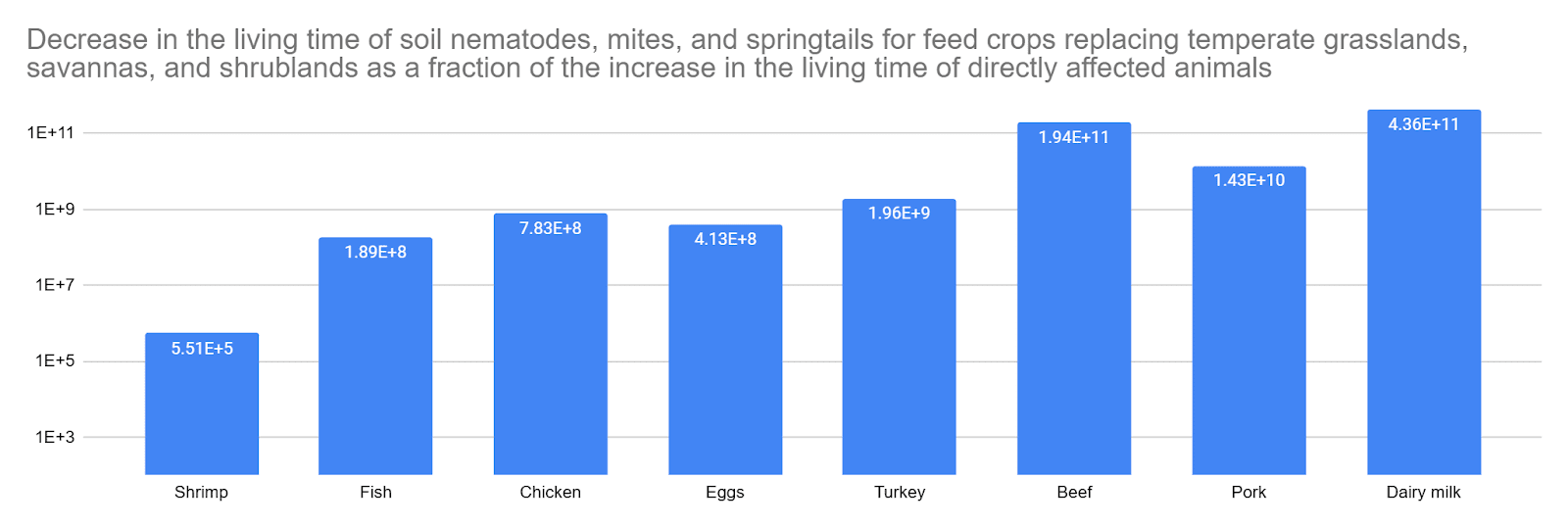

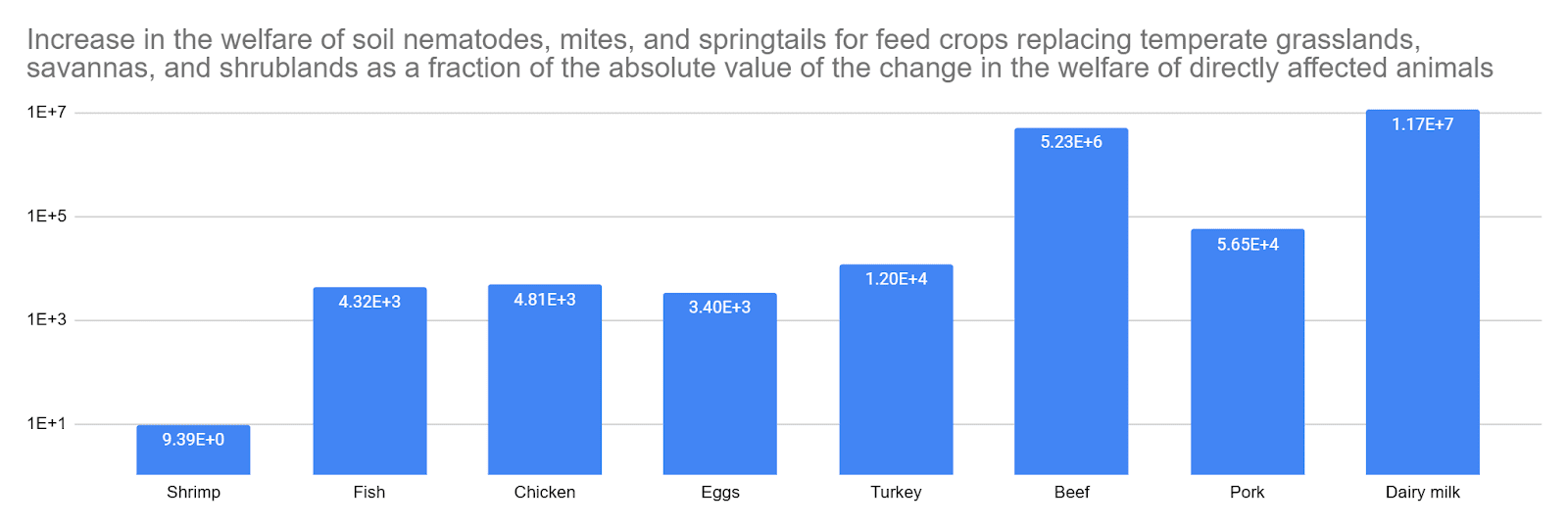
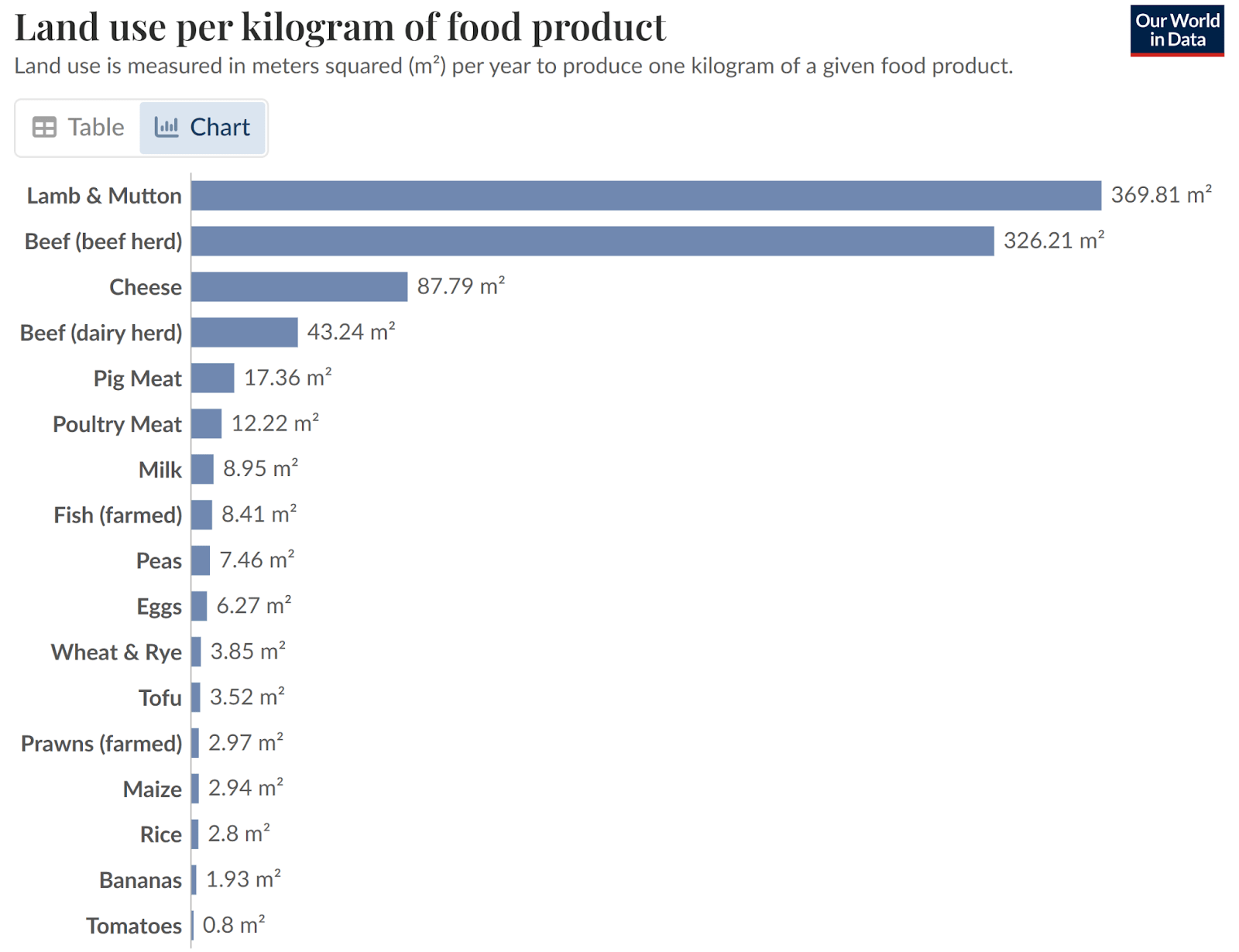
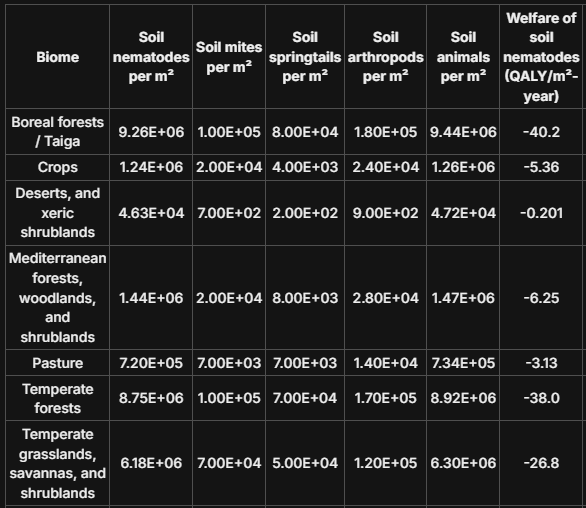


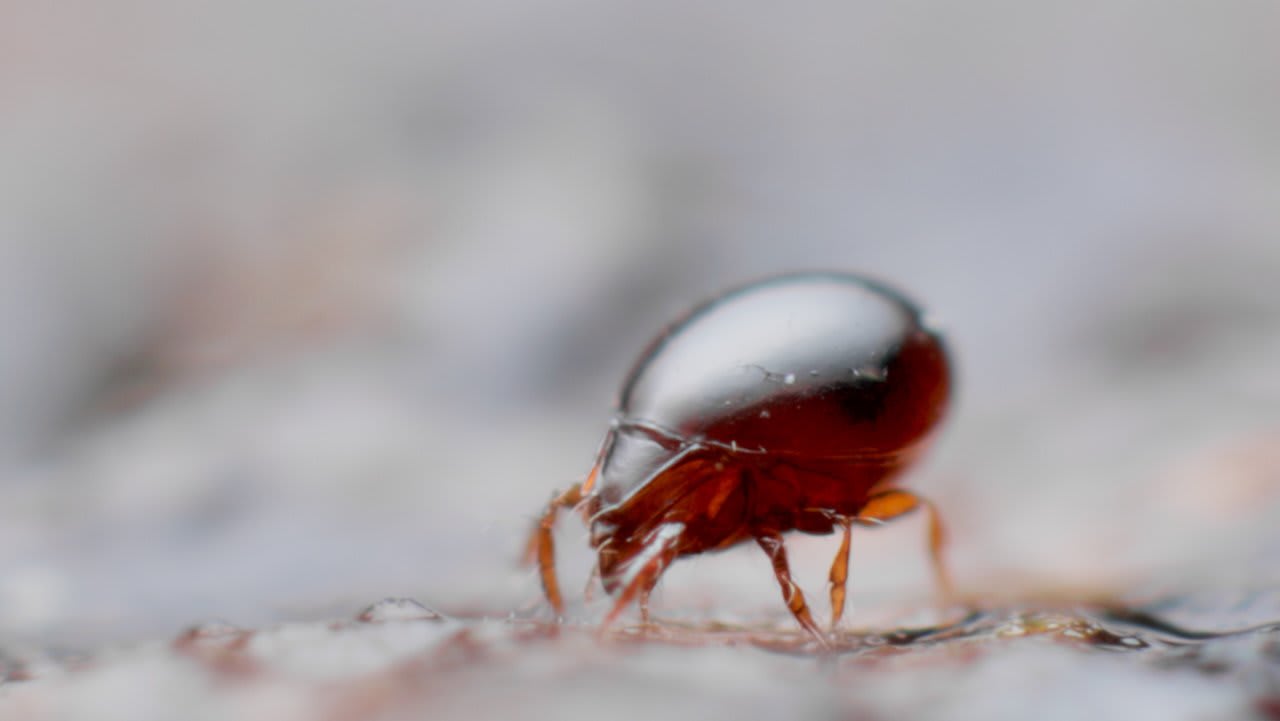
I'm supportive of doing this kind of thinking, but I think taking your beliefs to their logical conclusion suggests we should be looking to found charities that will end all life on earth; nuclear PROLIFERATION charities, perhaps charities that seek to make and release bioweapons that will kill of small animals, insects, etc. and maybe just charities that start wildfires. Have you given much thought to this?
Also, why does everyone assume that small organisms necessarily live net negative lives?
Welcome to the EA Forum, Scott!
I have not covered any microbes. Are you suggesting that increasing cropland, thus decreasing the number of soil ematodes, is harmful because it decreases the number of microbes? I would agree that increasing cropland decreases the number of microbes, and I would not be surprised if the effects on microbes were much larger than those on soil nematodes, mites, and springtails. From Table S1 of Bar-on et al. (2018), there are 10^30 terrestrial deep subsurface bacteria, 10^9 (= 10^(30 - 21)) times as many as nematodes, and I gue... (read more)